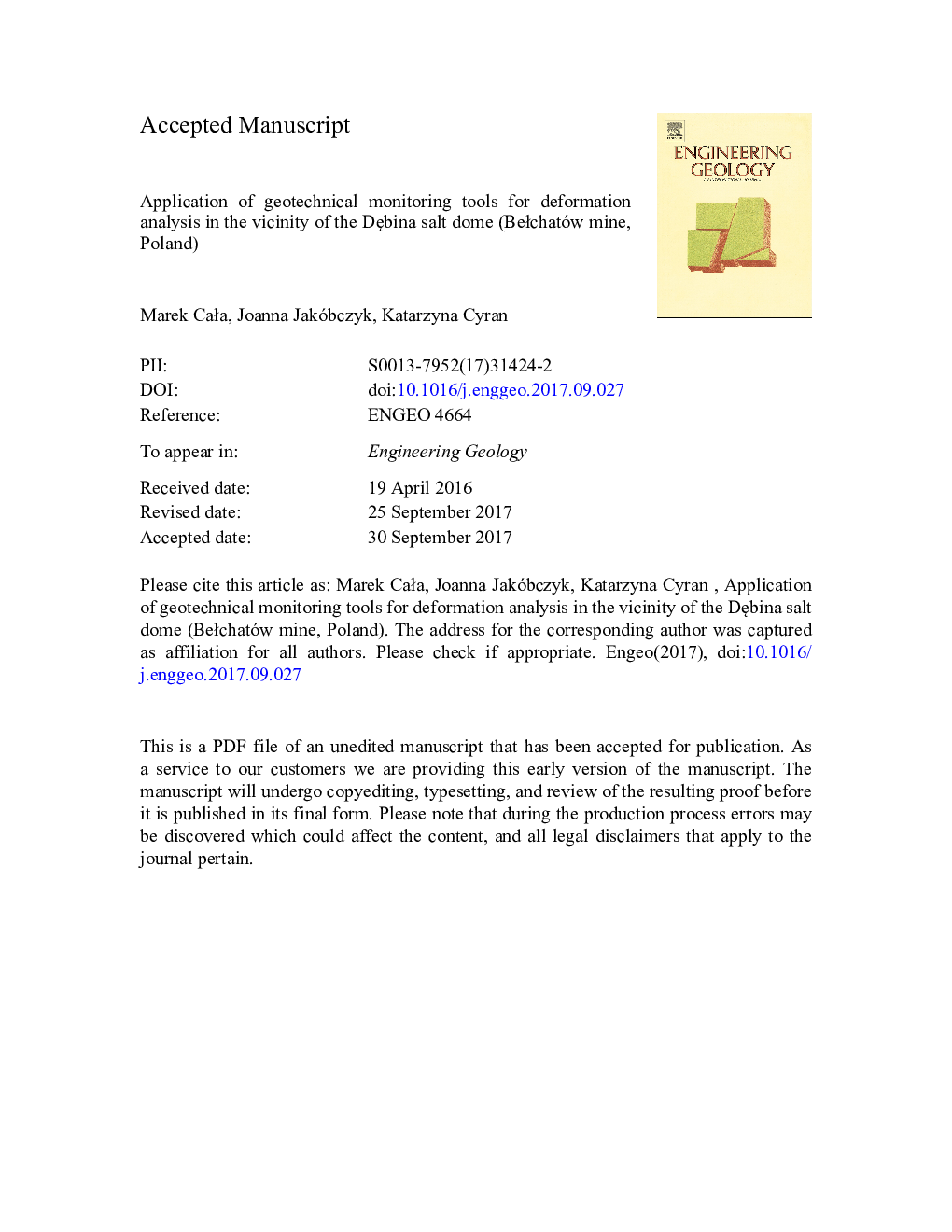| Article ID | Journal | Published Year | Pages | File Type |
|---|---|---|---|---|
| 8916039 | Engineering Geology | 2017 | 24 Pages |
Abstract
The presence of the DÄbina salt dome (DSD) entails new challenges for the exploitation of the BeÅchatów lignite (brown coal) deposit. Poland is the 5th largest world lignite producer (63.1 Mt). The BeÅchatów open-pit mine provides more than a half of the brown coal production capacity in Poland. The geological structure of the BeÅchatów area is complex due to tectonic and sedimentation processes, as well as to the presence of the DSD, which determines rather unique geological conditions in comparison to other brown coal mines. Halokinetic processes connected with rising of the DSD contributed to shaping the present lignite seams form. Brown coal extraction in such a complex environment endangers stability of pit wall slopes. The long-term mining of the BeÅchatów coal field and relaxation processes are factors that influence the development of both vertical and horizontal displacements. Of particular concern is the stability of the BeÅchatów western pit wall slope, outlining the necessity of a comprehensive geotechnical monitoring effort. A geodetic network aimed at measuring vertical displacements was installed above the salt dome. In order to measure horizontal displacements, borehole inclinometers were also installed on several mine benches. The analysis of vertical displacements revealed that the eastern part of the dome has been uplifted, while the southern, south-eastern and northern parts have undergone subsidence. Our study of horizontal displacements indicated zones of potential shear movements. The deformations were primarily connected with changes in geometry and steepening of the BeÅchatów western pit slope. However, relaxation processes caused a change in the primary stress conditions of the DSD and may have triggered the halokinetic salt movement.
Related Topics
Physical Sciences and Engineering
Earth and Planetary Sciences
Geotechnical Engineering and Engineering Geology
Authors
Marek CaÅa, Joanna Jakóbczyk, Katarzyna Cyran,
